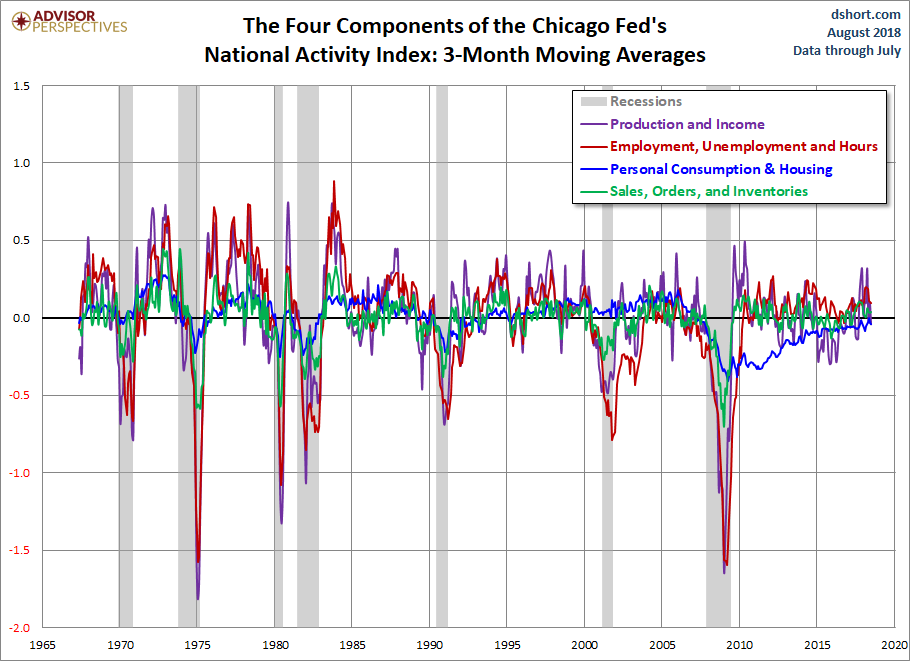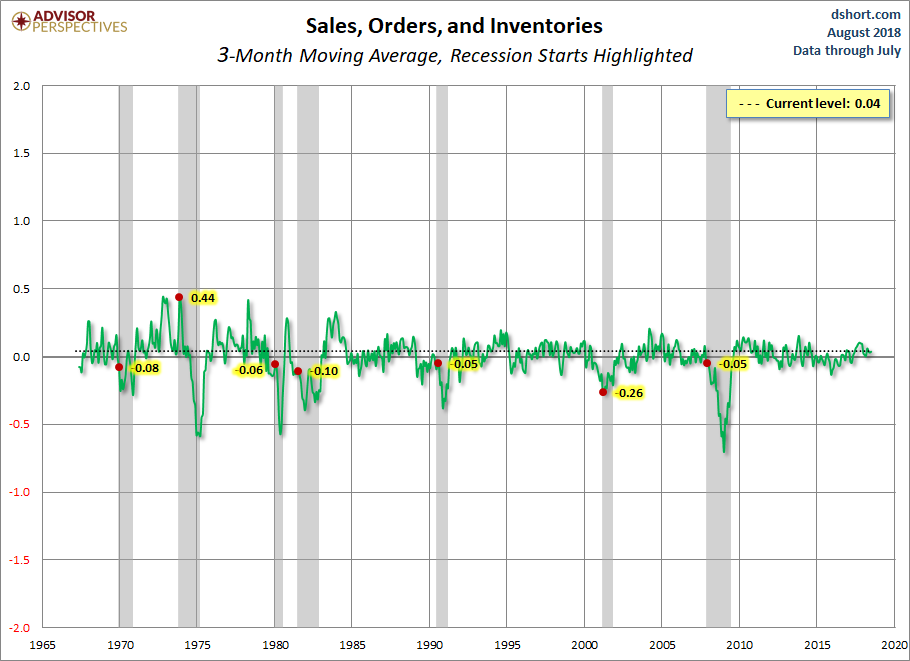The Chicago Fed’s National Activity Index, which we reported on yesterday morning, is based on 85 economic indicators drawn from four broad categories of data:
The complete list is available here in PDF format.
In this morning’s Chicago Fed update, we learned that “Led by slower growth in production-related indicators, the Chicago Fed National Activity Index (CFNAI) declined to +0.13 in July from +0.48 in June. Three of the four broad categories of indicators that make up the index decreased from June, but three of the four categories made positive contributions to the index in July. The index’s three-month moving average, CFNAI-MA3, moved down to +0.05 in July from +0.20 in June.”
A chart overlay of the complete multi-decade span of all four categories, even if we use the three-month moving averages, is quite challenging for visual clarity:

So here is a close-up view since 2000:

Here is a set of charts showing each of the four components since 1967. Because of the highly volatile nature of the data, the charts are based on three-month moving averages, a smoothing strategy favored by the Chicago Fed economists. The values for the months that the NBER subsequently identified as recession starts are also indicated.




To close this dissection of the CFNAI components, let’s reassemble them for a closer look at their collective 3-month moving averages since 2007.














Leave A Comment